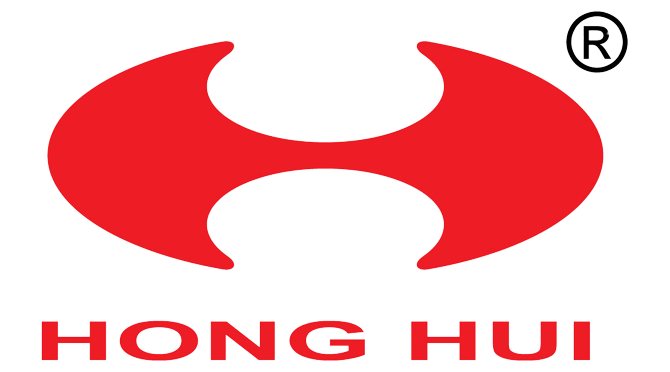02
2025
-
06
Understanding Universal Joints in Automobile Drive Systems
Universal joints, often referred to as U-joints, are crucial components in the automobile drive system, enabling power transfer between different parts of the vehicle while accommodating various angles of movement. They are particularly important in rear-wheel and four-wheel drive vehicles, where the drive shaft needs to connect with the differential and the wheels, allowing for flexibility and sm
Universal joints, often referred to as U-joints, are crucial components in the automobile drive system, enabling power transfer between different parts of the vehicle while accommodating various angles of movement. They are particularly important in rear-wheel and four-wheel drive vehicles, where the drive shaft needs to connect with the differential and the wheels, allowing for flexibility and smooth operation.
The primary function of a universal joint is to transmit torque and rotational motion. As the driveshaft spins, the U-joint allows it to pivot. This is essential because the angle between the driveshaft and the differential may change due to suspension movement or steering. Without the functionality of universal joints, vehicles would struggle with power transfer, leading to excessive wear and potential failure of the drivetrain.
Manufactured from durable materials, universal joints are designed to withstand harsh conditions. However, like any mechanical component, they can experience wear over time. Common signs of a failing U-joint include vibrations, clicking noises while turning, or difficulty in steering. If these symptoms arise, it's advisable to have the vehicle inspected promptly to avoid further damage.
Proper maintenance of universal joints is essential for ensuring their longevity and performance. Regular checks should involve inspecting the U-joint for any signs of grease leakage or damage. Many modern U-joints are sealed units, which require less maintenance than older models that may need periodic greasing. However, it is still a good practice to ensure that the joints are in good condition and free from rust or corrosion.
Additionally, the alignment of the driveshaft and universal joints is crucial. Misalignment can lead to premature wear and may cause the U-joint to fail. During routine service, mechanics often check for proper alignment, ensuring that the angles are correct and that the U-joint operates smoothly.
In summary, universal joints are integral to automobile drive systems, facilitating seamless power transfer while accommodating movement. Understanding their function and maintaining them can significantly enhance vehicle performance and longevity. Regular inspections and prompt attention to any issues can prevent costly repairs down the line, ensuring that drivers enjoy a safe and smooth driving experience. By prioritizing the health of the universal joints, vehicle owners can contribute to the overall reliability of their automobiles.
The primary function of a universal joint is to transmit torque and rotational motion. As the driveshaft spins, the U-joint allows it to pivot. This is essential because the angle between the driveshaft and the differential may change due to suspension movement or steering. Without the functionality of universal joints, vehicles would struggle with power transfer, leading to excessive wear and potential failure of the drivetrain.
Manufactured from durable materials, universal joints are designed to withstand harsh conditions. However, like any mechanical component, they can experience wear over time. Common signs of a failing U-joint include vibrations, clicking noises while turning, or difficulty in steering. If these symptoms arise, it's advisable to have the vehicle inspected promptly to avoid further damage.
Proper maintenance of universal joints is essential for ensuring their longevity and performance. Regular checks should involve inspecting the U-joint for any signs of grease leakage or damage. Many modern U-joints are sealed units, which require less maintenance than older models that may need periodic greasing. However, it is still a good practice to ensure that the joints are in good condition and free from rust or corrosion.
Additionally, the alignment of the driveshaft and universal joints is crucial. Misalignment can lead to premature wear and may cause the U-joint to fail. During routine service, mechanics often check for proper alignment, ensuring that the angles are correct and that the U-joint operates smoothly.
In summary, universal joints are integral to automobile drive systems, facilitating seamless power transfer while accommodating movement. Understanding their function and maintaining them can significantly enhance vehicle performance and longevity. Regular inspections and prompt attention to any issues can prevent costly repairs down the line, ensuring that drivers enjoy a safe and smooth driving experience. By prioritizing the health of the universal joints, vehicle owners can contribute to the overall reliability of their automobiles.
Related news
language
English
العربية
বাংলাদেশ
Български
Hrvatski
Česky
Dansk
Nederland
 Esperanto
Esperanto
Slovenski
Filipino
Suomi
Français
Maori
 Shqiptare
Shqiptare
Georgian
 Euskara
Euskara
Deutsch
Ελλάδα
ישראל
इंडिया
Magyarország
Ísland
Indonesia
Irlanda
Italia
日本語
Sovensko
Հայաստան
한국
Kyrgyz
ປະເທດລາວ
 Zulu
Zulu
Latvian
Lithuanian
Luxembourgish
 Latinus
Latinus
Macedonian
Малайская
Maltese
Монгол улс
 Cymraeg
Cymraeg
ဗမာ
 தமிழ்
தமிழ்
नेपाल
Norge
ایران
Polska
Portugal
România
Российская
Србија
 Slovak
Slovak
Србија
 Slovak
Slovak
Bosanski
Slovenian
Беларус
España
Sverige
Точик
ประเทศไทย
Türk
Azərbaycan
Uzbek
 Afrikaans
Afrikaans
Việt Nam
Share
Copyright© 2023 Jinjiang Honghui Automobile Parts Manufacture Co, Ltd. Powered by www.300.cn Tag

